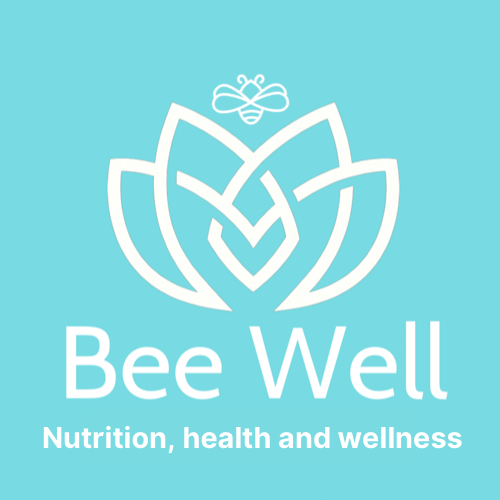Nutrition Labels 101
One of the biggest questions I get from people trying to change their eating habits is about food labels and food packaging. Whether you are trying to eat healthier, lose or gain weight, or just get the highest quality food for your dollar, reading food labels is an important part of the process. Although the labels have gotten a bit easier to read in recent years, they can still be a bit confusing, and the way products are designed and marketed on the shelves can be even more confusing. Knowing how to read these labels can make eating, and grocery shopping, much simpler, as well as healthier.
When we are selecting our groceries, the very first thing we see is the packaging. Food companies know this, and they try all sorts of tactics to make you think you are getting the best product as well as the best value-whether it’s true or not. Using “healthy claims” on packaging is a huge trend, and many of these claims are completely misleading. “Organic” or “pure cane sugar” is, after all, still just sugar; It’s not any healthier, and it doesn’t make the product better for you. Advertising “made with whole grains” on a box of sugary cereal is often found to be just a sprinkling of grains mixed into bleached white flour. If you look at a box of gummy fruit snacks, you will often see “made with real fruit” on the packaging, when in reality 40% of the product is corn syrup, and there may be 4 other types of sugar added before the tiniest bit of fruit enters the product. Being aware of these sneaky practices can help make your choices much easier.
Servings and Serving Sizes:
One of the biggest lessons in nutrition label is SERVING SIZE! This is without a doubt the most enlightening thing for many people to realize! A popular example: a serving of soda is 12oz and 150 calories-not 150 calories per 22oz bottle! An average small bag of chips grabbed with your lunch may say “160 calories per serving” but, in reality that bag may have 3 or more servings in it! Serving sizes are usually LESS that the average person expects! Always check the serving sizes before calculating your intake or calories and nutrients. If you consume the entire product, be sure to multiply ALL the calories and nutrition by the number of servings in the package.
The Ingredients:
Ingredients are found at the bottom of the nutrition label, and they are listed in order of quantity. The first few ingredients tell you the bulk of what the food is made of. If those first few ingredients include things like sugars (corn syrup is just highly process sugar!), refined grains, or hydrogenated oils-it is not a healthy food! If the product has several lines of ingredients, or many ingredients that are just long scientific words that you don’t know as “food”, you may want to choose another food option. Healthy whole ingredients give us the heathiest food-it’s that simple!
Reading Nutritional Percent Values:
All the nutrients including vitamins and minerals are listed with Daily Value percentages. These numbers are based on a total of 2000 calories a day. If your normal calorie intake in higher or lower than 2000 calories, by sure to adjust your intake accordingly. These values are based on a daily consumption-not each meal. If you track your nutrients carefully, be sure to take notice of this.
Sugars:
If eating less sugar is one of your nutrition goals, checking the ingredients is super important. Food companies know that many are trying to reduce sugar intake-so they use many forms of sugar to sweeten their products and these ingredients will be listed with different names, often in large quantities: high fructose corn syrup, malt syrup, lactose, dextrose, oat syrup, agave necter, ethyl malto, glucose, maltodextrin, and fruit juice concentrate are just a few of the many words that mean just one thing-SUGAR. It is recommended by the Dietary Guidelines for Americans to keep added sugars to less than 10% of your calorie intake for each day. If you are trying to eliminate or lessen the amount of sugar in your diet, check out my guide to Sugar for free HERE.
Fats:
Look for foods with low amounts of saturated fats, and no trans fats. These types of fats are linked to obesity and heart disease. On the flip side, look for foods that have unsaturated fats. Monounsaturated fat and polyunsaturated fat can actually lower the risks of disease! These fats include olive oils, nuts, seeds, and fish. These are heathy fats that are good for the heart, lowering cholesterol, and keeping the skin, joints, and overall health in check.
Best Advice!:
Shopping the perimeters of the grocery store and buying WHOLE foods is your best bet for a healthy diet. Fill your cart with an abundance of colorful fruits and veggies in the produce department, look for lean sources of protein in your seafood and meat department, and choose health dairy products to round out your cart. When venturing into the aisles of the store, be sure to choose whole grains packaged with little processing like whole grain breads, brown rice, and grain pastas.
If you are interested in learning more about healthy eating, check out my free guide to Clean Eating, and/or this blog post on the beginner’s guide to healthy eating!
If you are focused on changing your health habits to build a better YOU-consider one on one coaching! I’m educated, trained, and certified in nutrition, wellness, motivation, and fitness to guide you on your entire health journey! I look forward to chatting with you on a free call to discuss your personal health and wellness plan-reach out to me here.
